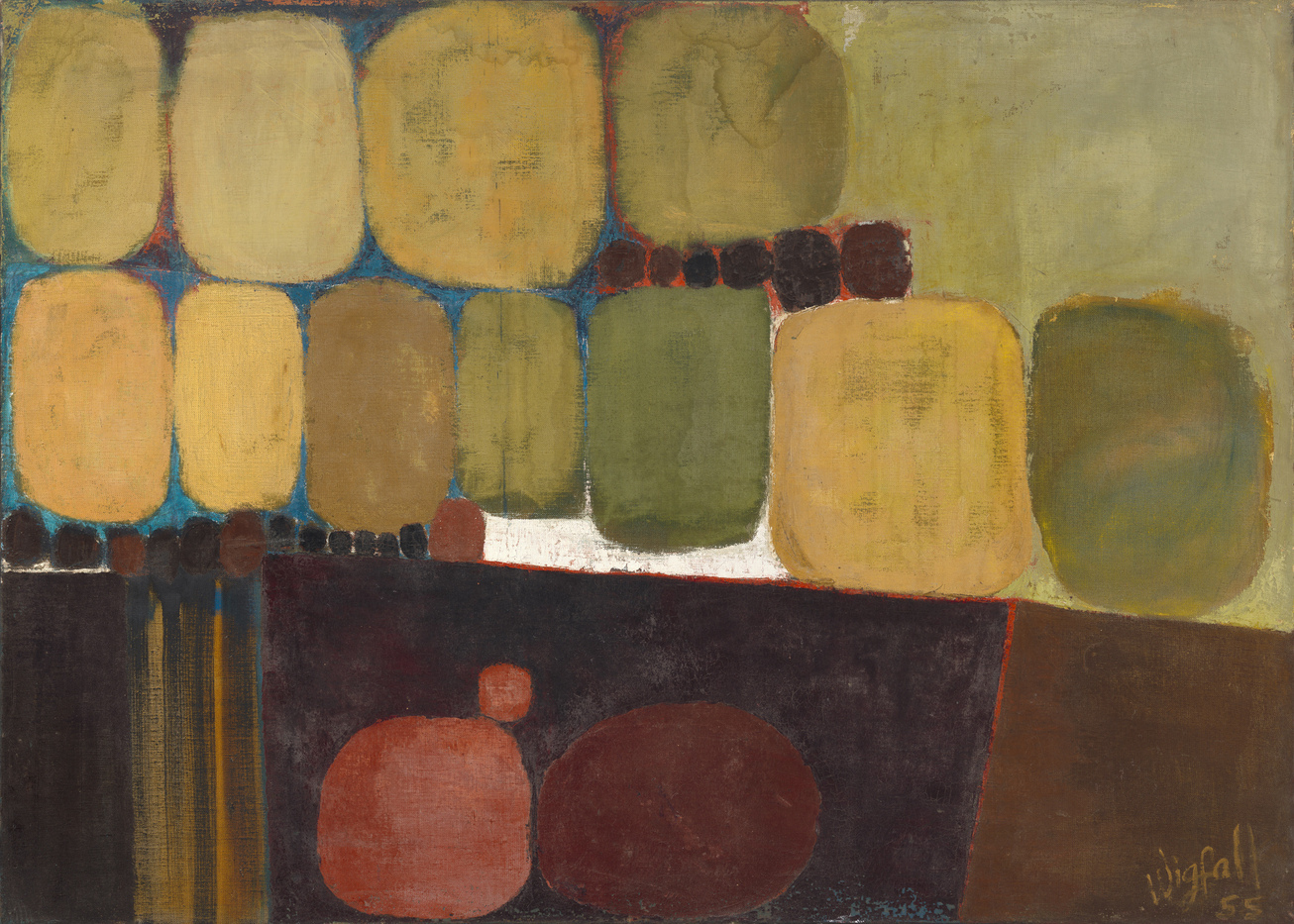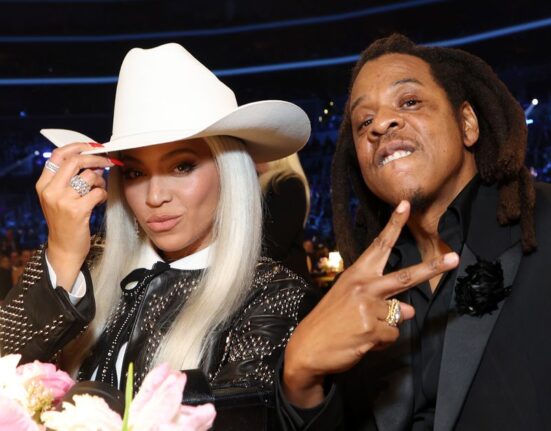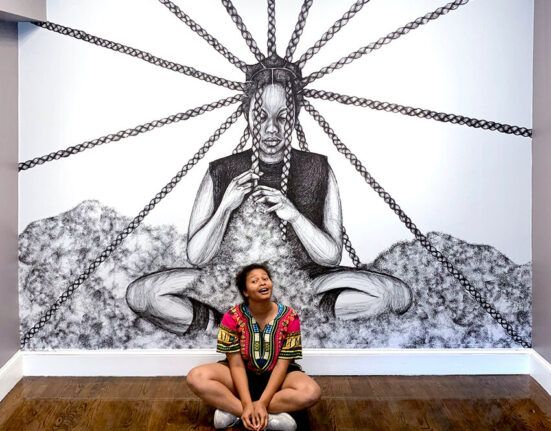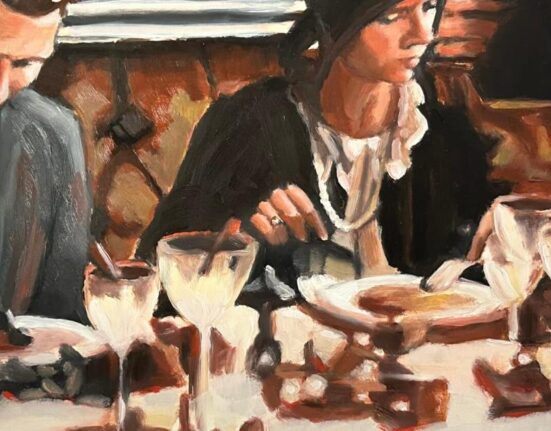
Installation view of “Benjamin Wigfall and Communications Village” (2023-24), Torggler Fine Arts Center, Christopher Newport University, Newport News, Va. | Courtesy the Mary M. Torggler Fine Arts Center, Photography by Echard Wheeler
THE FIRST RETROSPECTIVE of artist, curator, and educator Benjamin Wigfall (1930-2017) is a tour de force shedding light on an important artist and a powerful moment in art history. Active in Virginia and New York, Wigfall worked in abstraction, expressing himself through painting and assemblage before focusing on printmaking. He was a significant figure in his lifetime with ties to major artists and institutions.
 “Benjamin Wigfall and Communications Village” explores his life and work, and the transformative enterprise he nurtured, bringing neighborhood youth together with college students, university instructors, and professional artists in the name of community, mentorship, and artistic production.
“Benjamin Wigfall and Communications Village” explores his life and work, and the transformative enterprise he nurtured, bringing neighborhood youth together with college students, university instructors, and professional artists in the name of community, mentorship, and artistic production.
The exhibition presents nearly 90 works of art, 12 printing plates and blocks, and more than 50 archival objects and ephemera. While Wigfall is the focus of the show, the expansive nature of his artistic enterprise is reflected in the presentation. Accordingly, works by a variety of other artists in his orbit, figures who engaged with Communications Village, are also featured. The group includes Betty Blayton, Charles Gaines, Mavis Pusey, Benny Andrews, and Melvin Edwards.
“Benjamin Wigfall and Communications Village” has been hosted by museums located in towns that figure prominently in the artist’s biography. The exhibition is co-organized by the Samuel Dorsky Museum of Art at SUNY New Paltz, where Wigfall taught and formed Communications village, and the Virginia Museum of Fine Arts (VMFA) in Richmond, where he grew up.
After originating at the Dorsky Museum, the exhibition traveled to VMFA. Now the show is on view through the weekend at Torggler Fine Arts Center at Christopher Newport University in Newport News, Va., which is near Hampton University. The HBCU was known as Hampton Institute three generations ago when Wigfall was an undergraduate student and professor there.
FINDING HIS FOOTING IN VIRGINIA
BORN AND RAISED in Richmond, Va., Wigfall was attending Armstrong High School when he learned about VMFA. “The second half of my senior year, suddenly we had an art teacher. His name was Stafford W. Evans, who I just latched on to just about and he opened my eyes in so many ways. Also introduced me to the Virginia Museum. I did not know that there was a museum in Virginia, or in Richmond,” the artist said in a 2003 video interview conducted by then-VMFA curator Tosha Grantham.
From there, Wigfall began an enduring relationship with VMFA that spans decades. The engagement started with art classes when he was a teen and, over the years, included fellowships, acquisitions, commissions, exhibitions, and public programs. He was a student at Hampton from 1949-53 and received pair of fellowships from VMFA that helped cover the costs of his undergraduate education.
In 1949-50, the artist was awarded $50/month for 10 months. In 1951-52, the amount was $70/month for 10 months. Home for the Christmas holidays in December 1949, Wigfall worked at VMFA, a fellowship requirement, designing and printing posters for four museum exhibitions. He returned to the museum for similar duties in December 1951.
Wigfall earned a BS degree in art education from Hampton. In the 1953 yearbook, he is listed among the seniors. Several affiliations and accomplishments are noted below his photo, including president of the art club; layout editor of the Hamptonian; Virginia Art Association prize winner (1952); exhibition awards; and “Who’s Who” in American Colleges and Universities (1952).
 When he was still a student at Hampton, Wigfall began to receive institutional recognition. He showed his work in VMFA’s “Virginia Artists, 1951″ exhibition and won the first-place purchase award. As a result, VMFA acquired of one his paintings. “Chimneys” (1951) is an abstracted image featuring statuesque structures inspired by the industrial skyline not too far from the Church Hill neighborhood where the artist grew up.
When he was still a student at Hampton, Wigfall began to receive institutional recognition. He showed his work in VMFA’s “Virginia Artists, 1951″ exhibition and won the first-place purchase award. As a result, VMFA acquired of one his paintings. “Chimneys” (1951) is an abstracted image featuring statuesque structures inspired by the industrial skyline not too far from the Church Hill neighborhood where the artist grew up.
“I stood on the right-hand side of the viaduct going towards Church Hill and I used to see smokestacks out there. And one time I was crossing the bridge—and I used to walk across often—I remember it was becoming dusk and I saw these smokestacks and I refer to them as still whispering, because I always thought of how at certain time the day see them billowing with smoke and they were busy. It was such a serene, quiet thing, and such a noble thing, the silhouette of these,” Wigfall said in the 2003 interview.
“They begin to have personalities almost and character and that’s I think what I tried to capture in those and so they were like heroes to me in a way. There’s a nobility in something very common and I think that’s one of the ideas I really tried to have. And that could be anywhere, except for me, is very specifically from Richmond.”
“They begin to have personalities almost and character and that’s I think what I tried to capture in those and so they were like heroes to me in a way. There’s a nobility in something very common and I think that’s one of the ideas I really tried to have. And that could be anywhere, except for me, is very specifically from Richmond.” — Benjamin Wigfall on ‘Smokestacks’
“Chimneys” appears on the cover of the “Benjamin Wigfall and Communications Village” exhibition catalog and is arguably Wigfall’s best known work. Seven decades ago, when VMFA acquired it, Wigfall was only 20 years old. He became the youngest artist and only the fourth African American represented in VMFA’s collection. Several years later, Wigfall participated in “American Painting, 1958″ at VMFA. He won that juried exhibition, too, and the museum acquired another work, adding the mixed-media painting “Corrosion and Blue” (1957) to its collection.
The next year, Wigfall went on to earn an MFA from Yale University (1959) and returned to Hampton, becoming a faculty member in the art department (1955-63).

BENJAMIN WIGFALL (American, 1930–2017), “Corrosion and Blue,” 1957 (polymer medium on masonite, 36 × 48 inches / 91.44 cm × 121.92 cm). | © Estate of Benjamin Wigfall. Virginia Museum of Fine Arts, Richmond; John Barton Payne Fund, 58.13.6. Photo by David Stover

Installation view of “Benjamin Wigfall and Communications Village” (2023-24), Torggler Fine Arts Center, Christopher Newport University, Newport News, Va. Shown, from left, BENJAMIN WIGFALL (5), “Dark Passage,” circa 1957-70 (woodburning and paint on wood, 80 x 35 inches); Untitled, circa 1957-70 (assemblage of leaf, metal foil, various papers, paint and various washes adhered to paperboard, 10 x 10 inches); Untitled, 1957-70 (assemblage of found wood and paint, 79 x 22 inches); Untitled, 1957-70 (plywood, found wood, paint, 15 13/32 x 12 1/8 x 51/64 inches); “Corrosion and Blue,” 1957 (polymer medium on masonite, 36 × 48 inches). | Courtesy the Mary M. Torggler Fine Arts Center, Photography by Echard Wheeler
MAKING HIS MARK IN NEW YORK
In 1963, Wigfall landed at the State University of New York at New Paltz, where he was appointed an assistant professor of design and became a founding member of the Black Studies department, one of the first in the nation.
Nearly a decade into his tenure at New Palz, Wigfall said he “discovered” a Black community in nearby Kingston, N.Y. He found an old building there that he envisioned as his studio. Instead, the space became Communications Village.
“The young kids in the neighborhood were helping me to fix it up. It was one of the most natural flowing type of things,” Wigfall said in documentary footage featured in an exhibition video (shown below). “I was not recruiting anybody. The kids just wanted to know what was happening. They’d all get involved in helping.”
The organization was a community center, printmaking facility, and mentorship program with local teens learning art and photography from SUNY faculty and students. New York City artists gave presentations and critiques and the young people produced their print projects. Wigfall established Communications Village as a nonprofit in 1973 and it was active until 1983 when it “quietly winds down due to lack of funds and other specified reasons,” according to the chronology published in the exhibition catalog.
“It was one of the most rewarding times of my life, being in the community and fixing up the building. We became a kind of community think tank,” Wigfall said.
“It was one of the most rewarding times of my life, being in the community and fixing up the building. We became a kind of community think tank.”
— Benjamin Wigfall
Benny Andrews, Mavis Pusey, Jayne Cortez, and Melvin Edwards were among the artists who visited Communications Village. Charles Gaines also came, making prints in 1974 and 1975. Robert Blackburn was a key adviser. Romare Bearden and Ernest Crichlow were inaugural board members. In 1972, the board determined that the key goals of Communications Village were “rehabilitation and recreation for the Kingston community,” according to the chronology.
“Everybody that came in, we didn’t know that they were famous or upcoming or anything, because they came in just like Ben came in. And they would work with us, just like Ben worked with us. Right? And let us do their work. We did their prints and everything. How cool is that?” Teresa Thomas-Washington and Dina Washington, who were young printers at Communications Village, said in the exhibition video.
Larry Carpenter and Bobby Easter were also young printers. They said: “The barn that we ended up working in was an empty space for most of our childhood, until one day the doors were open, and all of a sudden, we were looking to see what was going on. And Ben just scooped us up and the rest is, you know, Communications Village history.” CT
Benjamin Wigfall and Communications Village is on view at Torggler Fine Arts Center at Christopher Newport University, Newport News, Va., from Nov. 4, 2023-March 24, 2024
IMAGE: Above left, Benjamin Wigfall with his painting ‘Chimneys,’ Virginia Artists exhibition, Virginia Museum of Fine Arts, 1951. | Benjamin L. Wigfall Artist Archives (VA-12), Gift of Michael Gino Wigfall and Gia Oke-Bello, VMFA Archives
FIND MORE The Virginia Museum of Fine Arts has more than two dozen works by Benjamin Wigfall in its collection
Benjamin Wigfall talks about “Chimneys” (1951), arguably his best known work which appears on the cover of the exhibition catalog and is in the collection of the Virginia Museum of Fine Arts and also explains how Communications Village came about with some of his former students also sharing their experiences. | Video by VMFA
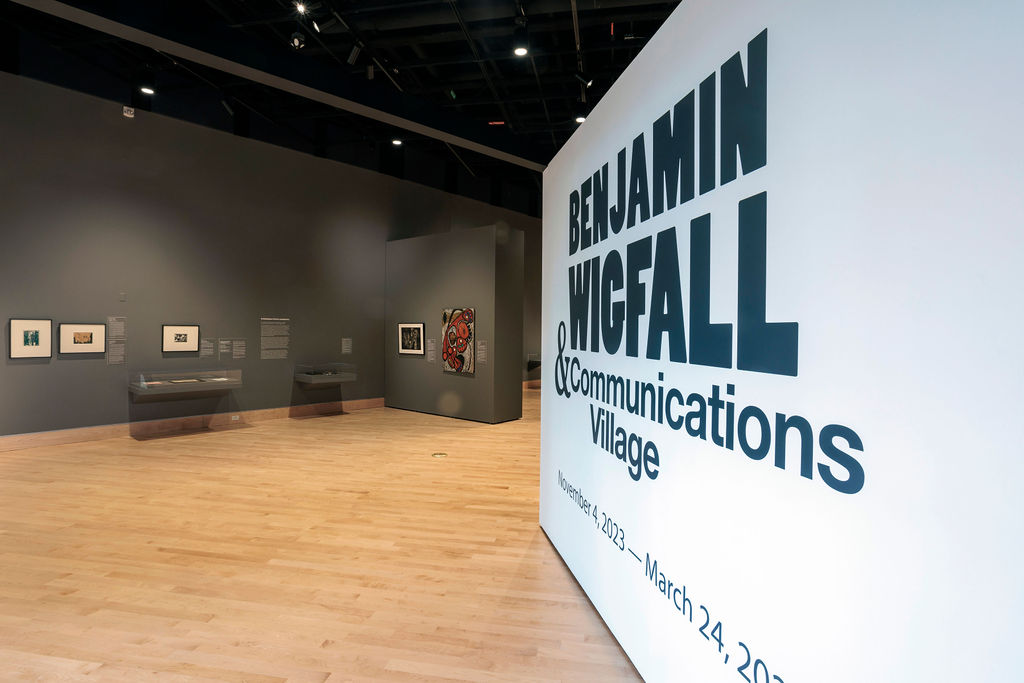
Installation view of “Benjamin Wigfall and Communications Village” (2023-24), Torggler Fine Arts Center, Christopher Newport University, Newport News, Va. | Courtesy the Mary M. Torggler Fine Arts Center, Photography by Echard Wheeler
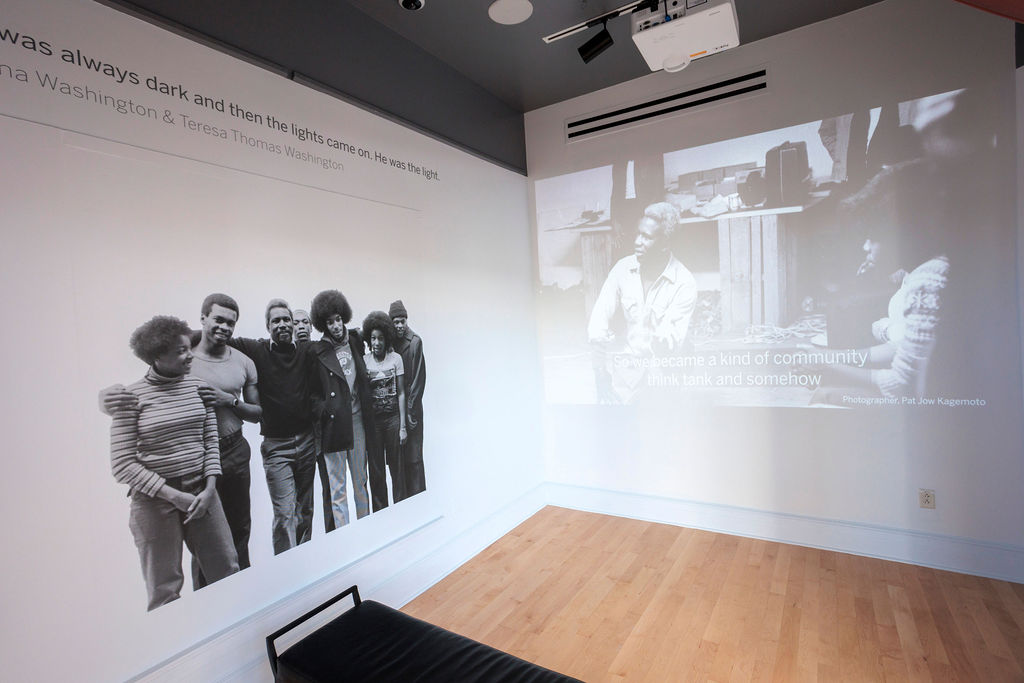
Installation view of “Benjamin Wigfall and Communications Village” (2023-24), Torggler Fine Arts Center, Christopher Newport University, Newport News, Va. | Courtesy the Mary M. Torggler Fine Arts Center, Photography by Echard Wheeler

Installation view of “Benjamin Wigfall and Communications Village” (2023-24), Torggler Fine Arts Center, Christopher Newport University, Newport News, Va. | Courtesy the Mary M. Torggler Fine Arts Center, Photography by Echard Wheeler
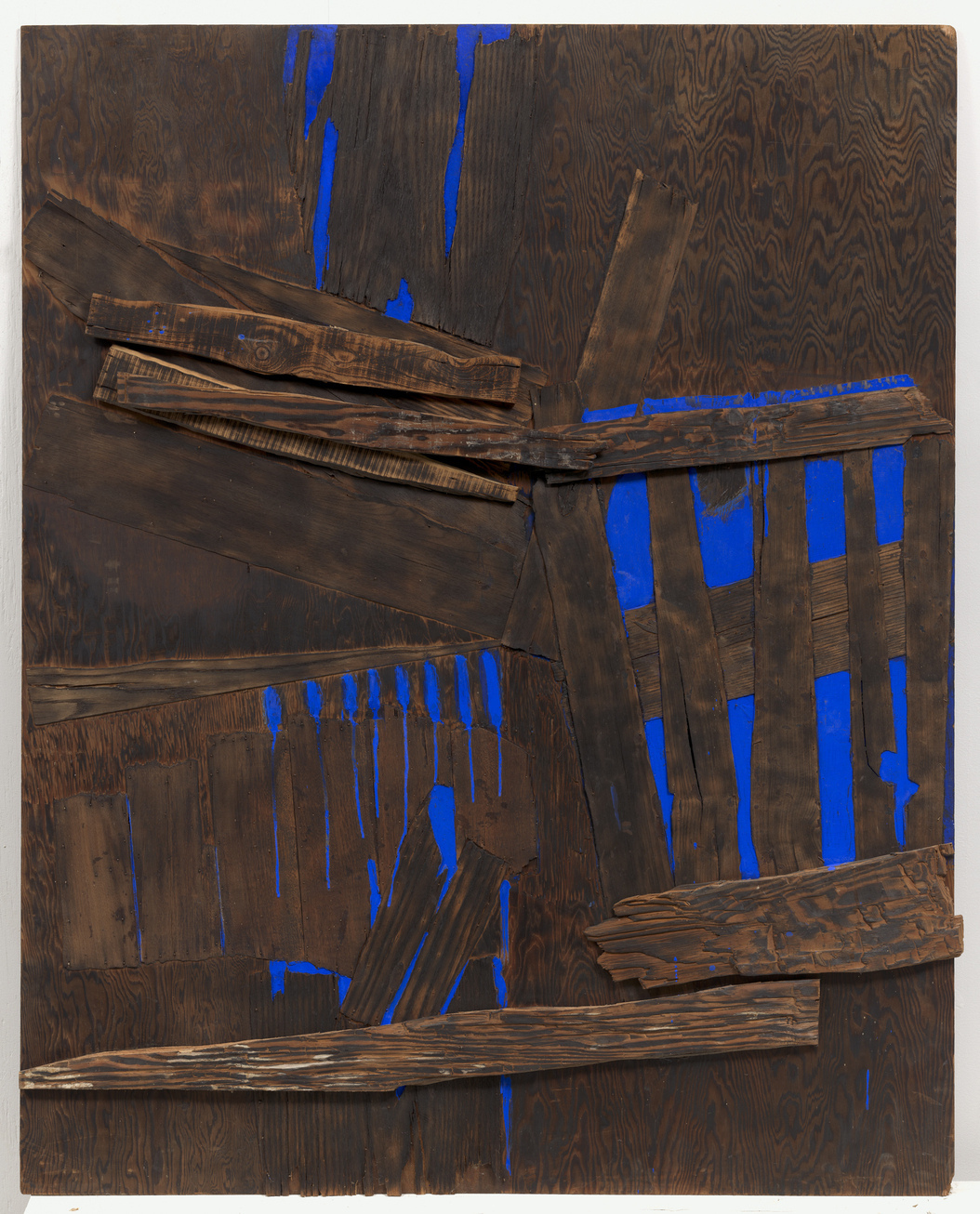
BENJAMIN WIGFALL (American, 1930–2017), Untitled, circa 1957-63 (wood, metal nails, paint, Overall: 60 × 48 × 1 19/32 inches / 152.4 × 121.92 × 4.05 cm). | © Estate of Benjamin Wigfall. Virginia Museum of Fine Arts, Arthur and Margaret Glasgow Endowment, 2022.202. Photo by Travis Fullerton
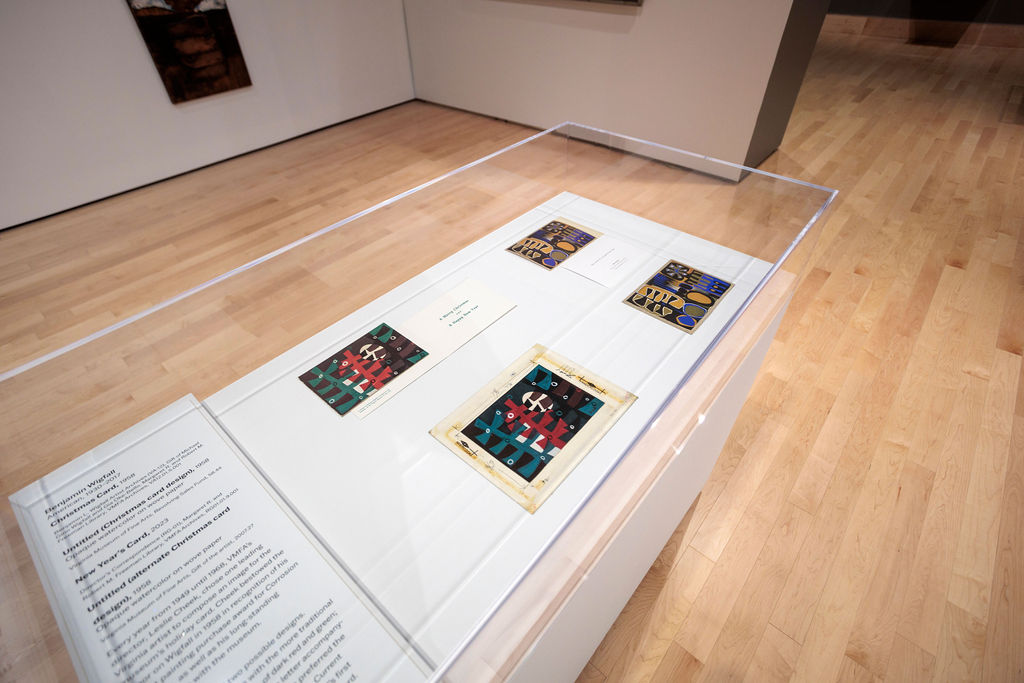
In 1958, VMFA Director Leslie Cheek commissioned Benjamin Wigfall to design the museum’s Christmas card. | Installation view of “Benjamin Wigfall and Communications Village” (2023-24), Torggler Fine Arts Center, Christopher Newport University, Newport News, Va. | Courtesy the Mary M. Torggler Fine Arts Center, Photography by Echard Wheeler
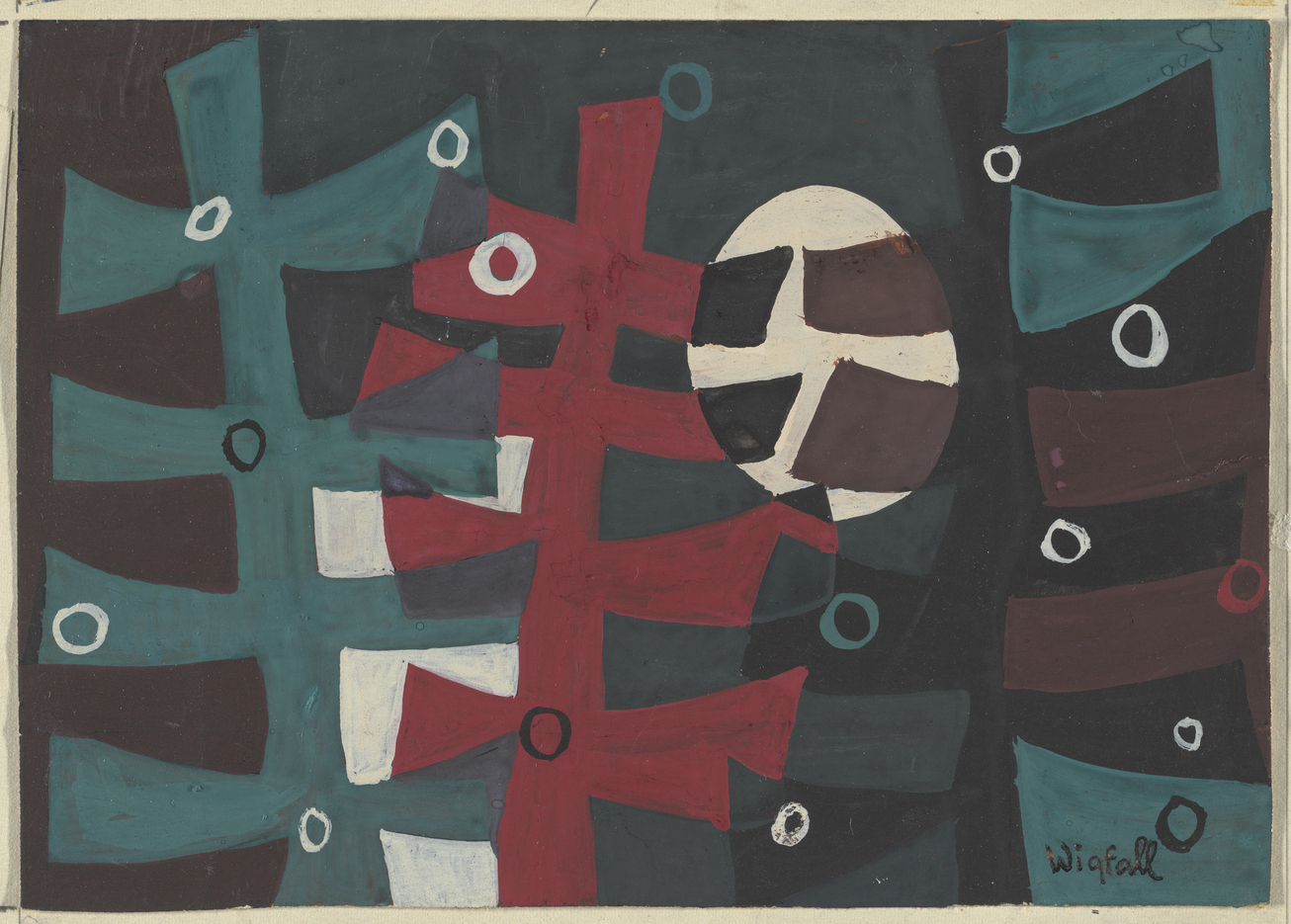
BENJAMIN WIGFALL (American, 1930–2017), Untitled (Christmas Card Design), 1958 (gouache on paper, 5 inches H x 7 inches W / 12.7 cm x 17.78 cm), Signed in ink lower right, Wigfall. | © Estate of Benjamin Wigfall. Virginia Museum of Fine Arts, Richmond; Revolving Sales Fund, 58.44. Photo by Travis Fullerton

Installation view of “Benjamin Wigfall and Communications Village” (2023-24), Torggler Fine Arts Center, Christopher Newport University, Newport News, Va. Shown, at left, 1953 Hampton Institute yearbook. | Courtesy the Mary M. Torggler Fine Arts Center, Photography by Echard Wheeler

Installation view of “Benjamin Wigfall and Communications Village” (2023-24), Torggler Fine Arts Center, Christopher Newport University, Newport News, Va. | Courtesy the Mary M. Torggler Fine Arts Center, Photography by Echard Wheeler
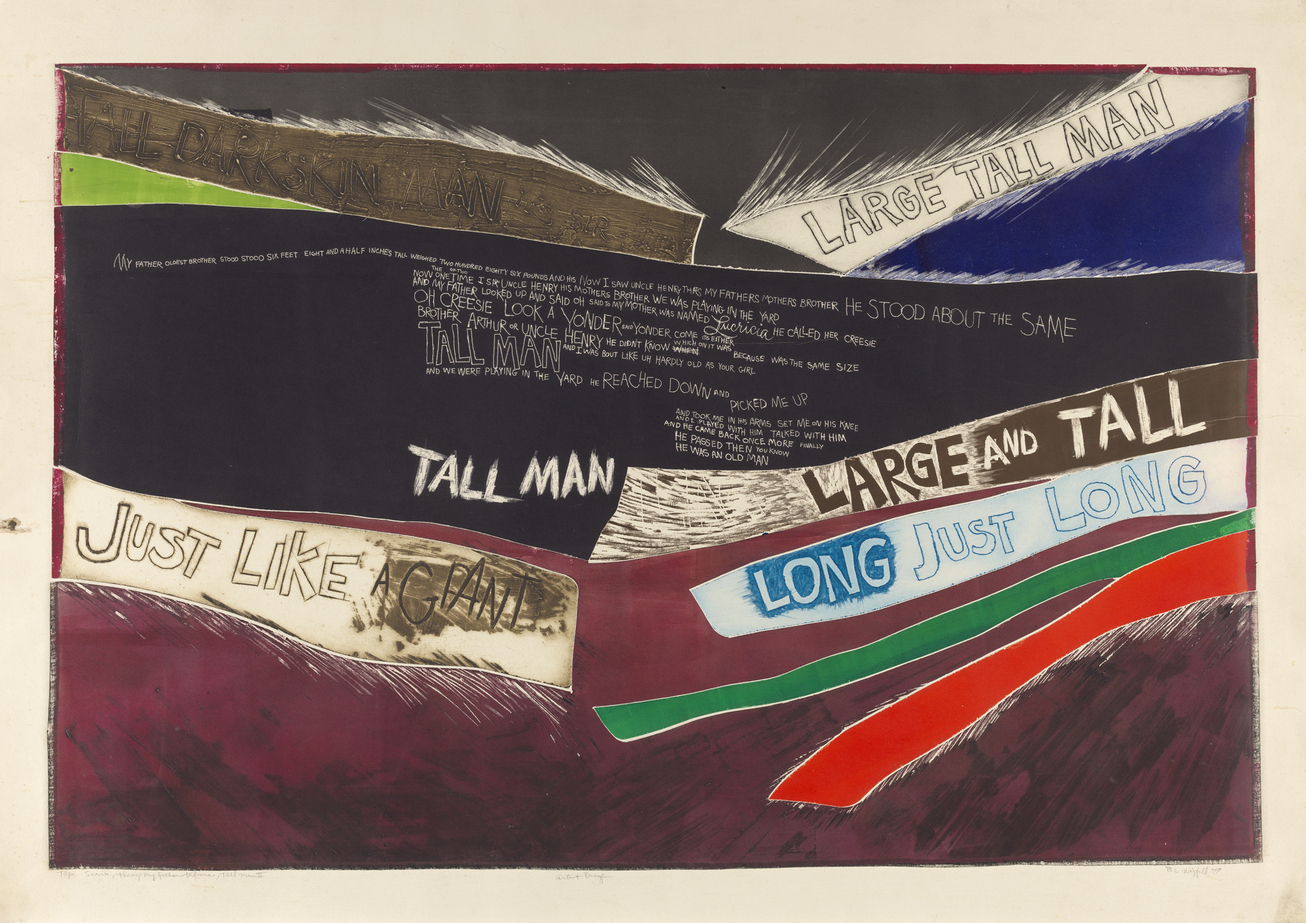
BENJAMIN WIGFALL (American, 1930–2017), “Things My Father Told Me, Tall Man II,” 1977 (intaglio on wove paper, 27 9/16 x 39 1/4 inches). | © Estate of Benjamin Wigfall. Virginia Museum of Fine Arts, Arthur and Margaret Glasgow Endowment, 2022.210. Photo by Travis Fullerton
FIND MORE Explore “Things My Father Told Me, Tall Man II” (1977) by Benjamin Wigfall, accompanied by audio of the artist talking about the significance of the work
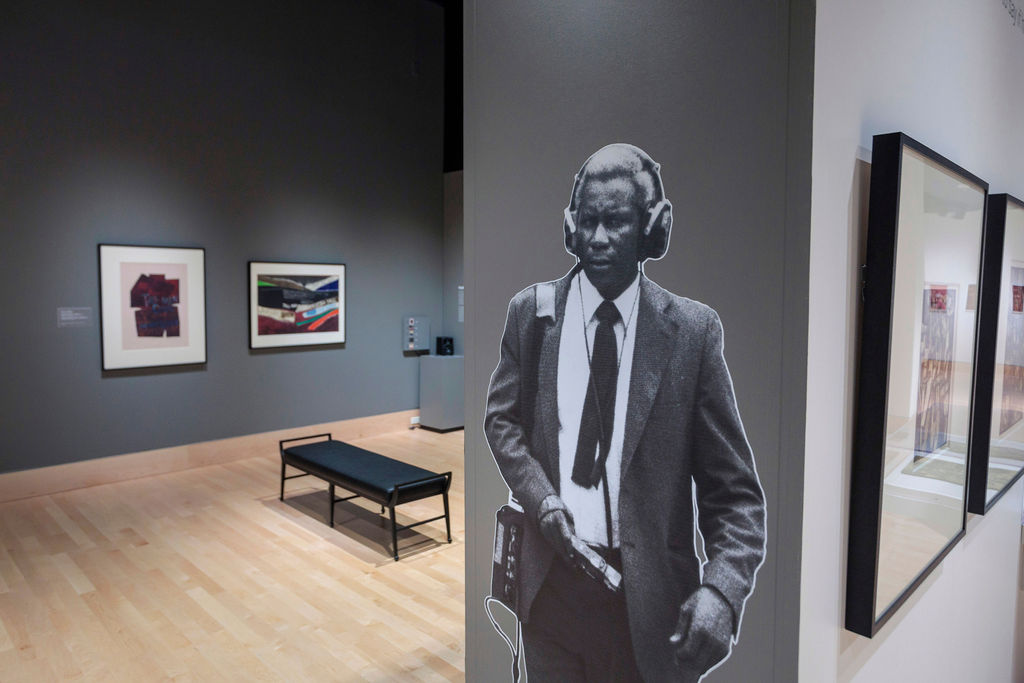
Installation view of “Benjamin Wigfall and Communications Village” (2023-24), Torggler Fine Arts Center, Christopher Newport University, Newport News, Va. Shown, in background, second from left, BENJAMIN WIGFALL, “Things My Father Told Me, Tall Man II,” 1977 (intaglio on wove paper, 27 9/16 x 39 1/4 inches). | Courtesy the Mary M. Torggler Fine Arts Center, Photography by Echard Wheeler
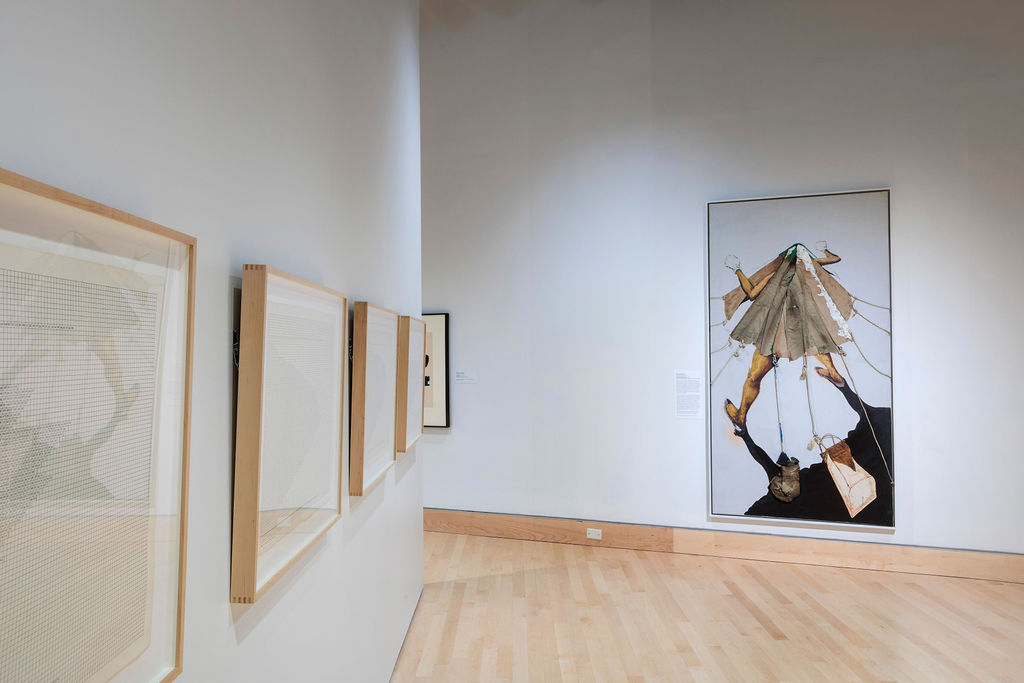
Installation view of “Benjamin Wigfall and Communications Village” (2023-24), Torggler Fine Arts Center, Christopher Newport University, Newport News, Va. Shown, far right, BENNY ANDREWS, “Sexism Study #24,” 1973 (oil on canvas with painted fabric collage and rope, 96 x 50 1/2 x 2 inches). | Courtesy the Mary M. Torggler Fine Arts Center, Photography by Echard Wheeler
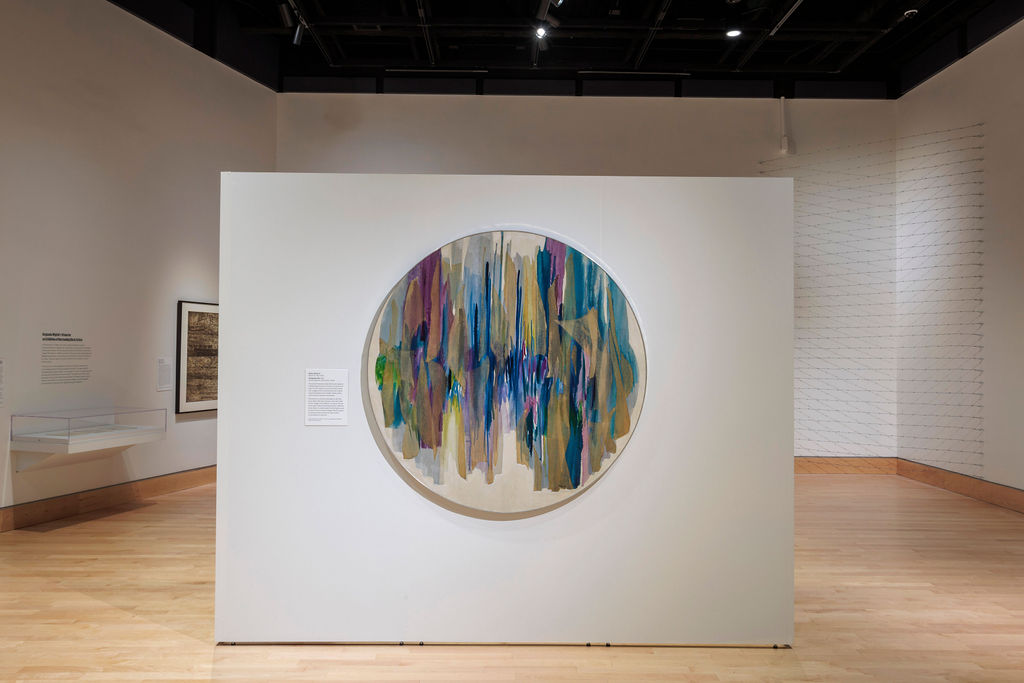
Installation view of “Benjamin Wigfall and Communications Village” (2023-24), Torggler Fine Arts Center, Christopher Newport University, Newport News, Va. Shown, BETTY BLAYTON, “Consume #2,” 1969 (oil and paper on cotton duck canvas, 59 inches diameter). | Courtesy the Mary M. Torggler Fine Arts Center, Photography by Echard Wheeler
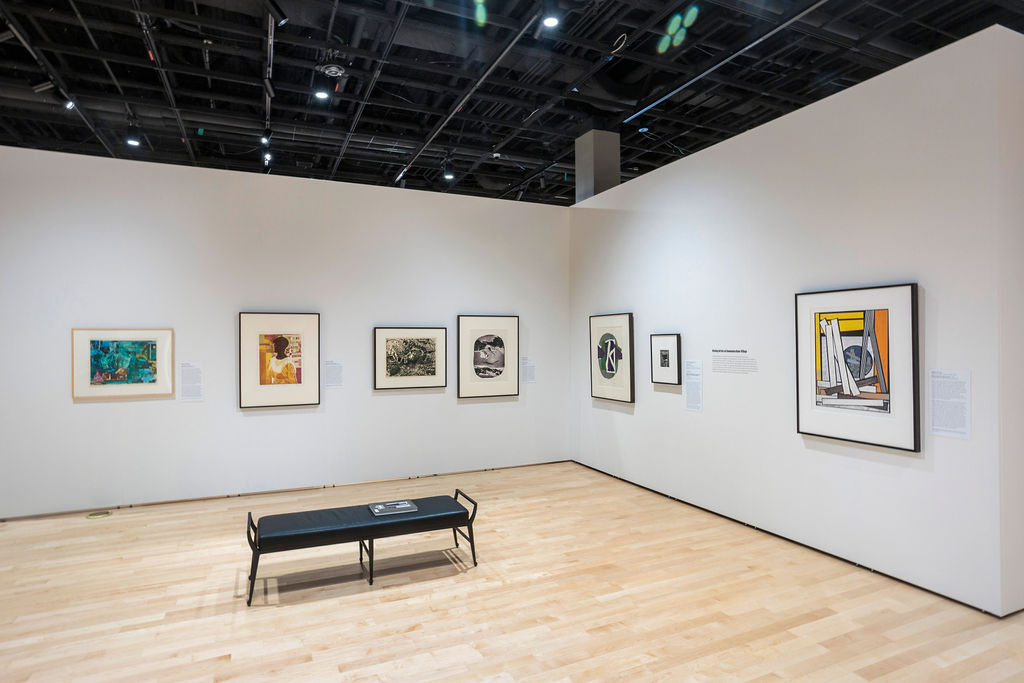
Installation view of “Benjamin Wigfall and Communications Village” (2023-24), Torggler Fine Arts Center, Christopher Newport University, Newport News, Va. Shown, far right, MAVIS PUSEY, “Decaying Construction,” 1970 (screenprint on BFK Rives wove paper, 41 1/4 x 29 1/2 inches). 4/20 | Courtesy the Mary M. Torggler Fine Arts Center, Photography by Echard Wheeler
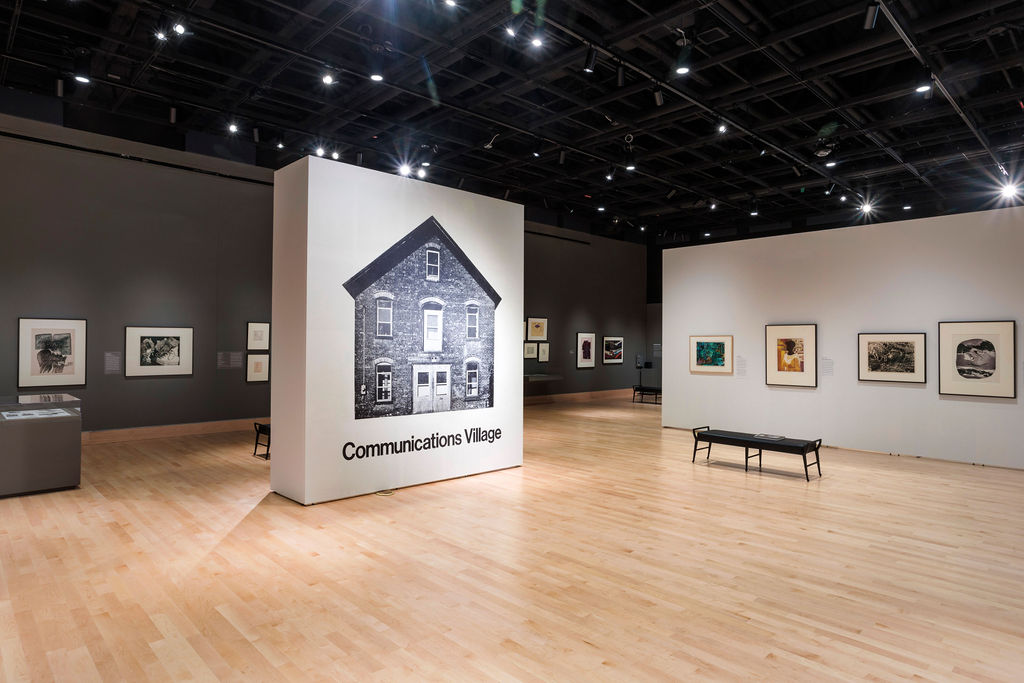
Installation view of “Benjamin Wigfall and Communications Village” (2023-24), Torggler Fine Arts Center, Christopher Newport University, Newport News, Va. | Courtesy the Mary M. Torggler Fine Arts Center, Photography by Echard Wheeler

Installation view of “Benjamin Wigfall and Communications Village” (2023-24), Torggler Fine Arts Center, Christopher Newport University, Newport News, Va. | Courtesy the Mary M. Torggler Fine Arts Center, Photography by Echard Wheeler
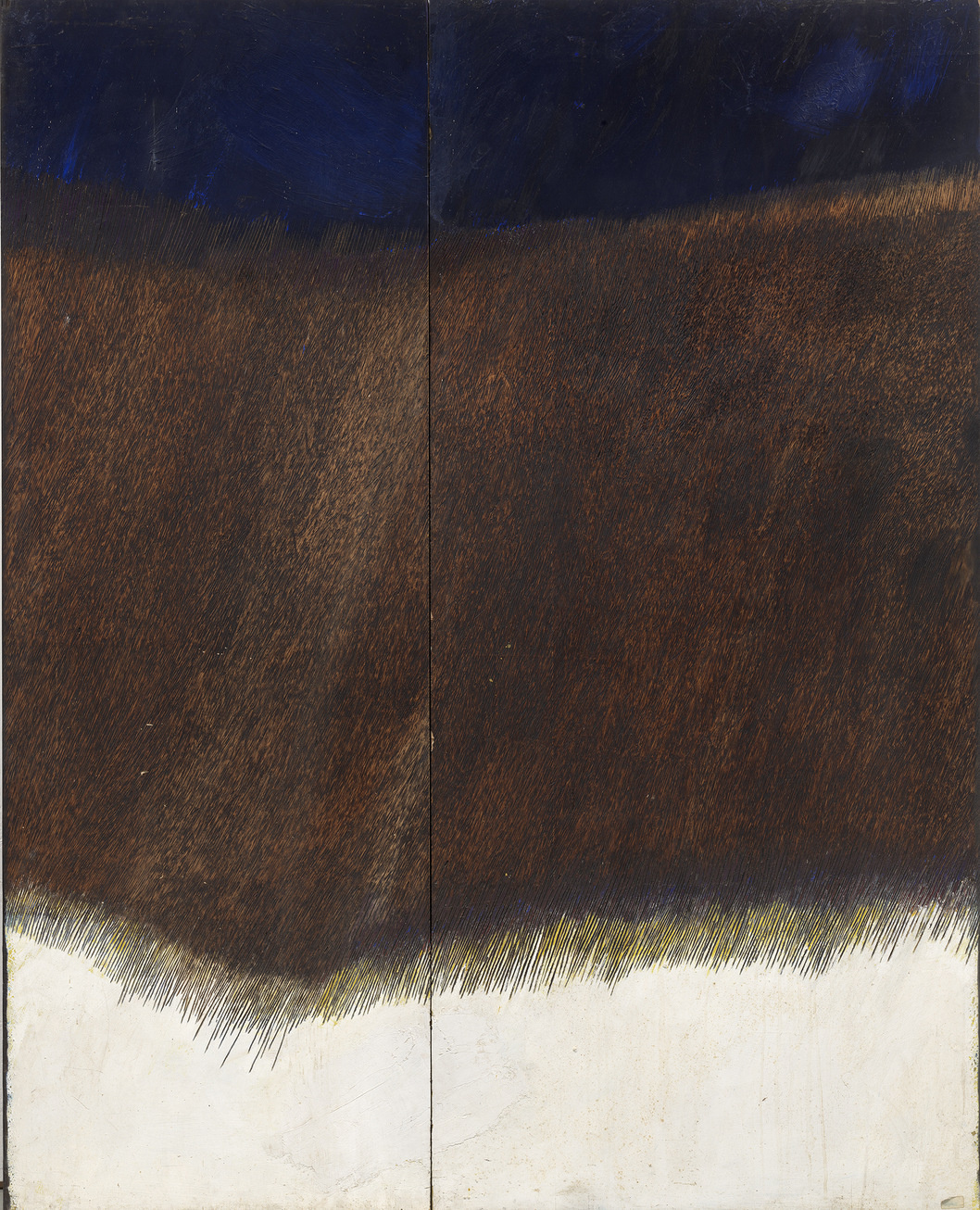
BENJAMIN WIGFALL (American, 1930–2017), “Burning #3,” circa 1957-63 (woodburning and paint on prefabricated wood doors, 80 x 64 inches). | Virginia Museum of Fine Arts, Arthur and Margaret Glasgow Endowment, 2022.203a-b. Photo by Travis Fullerton

Installation view of “Benjamin Wigfall and Communications Village” (2023-24), Torggler Fine Arts Center, Christopher Newport University, Newport News, Va. | Courtesy the Mary M. Torggler Fine Arts Center, Photography by Echard Wheeler
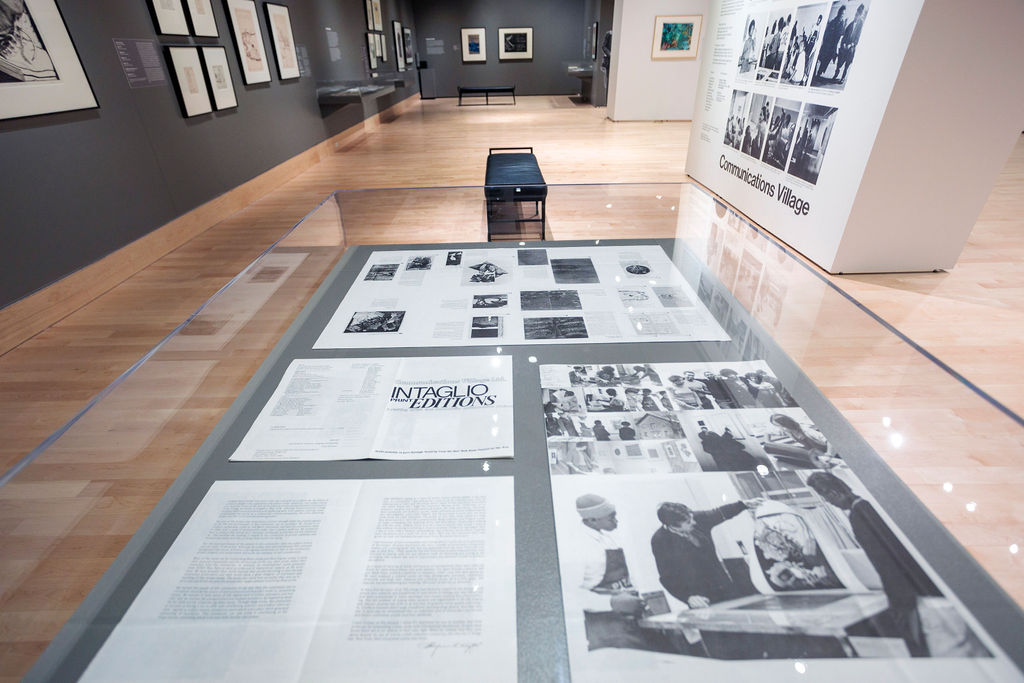
Installation view of “Benjamin Wigfall and Communications Village” (2023-24), Torggler Fine Arts Center, Christopher Newport University, Newport News, Va. | Courtesy the Mary M. Torggler Fine Arts Center, Photography by Echard Wheeler
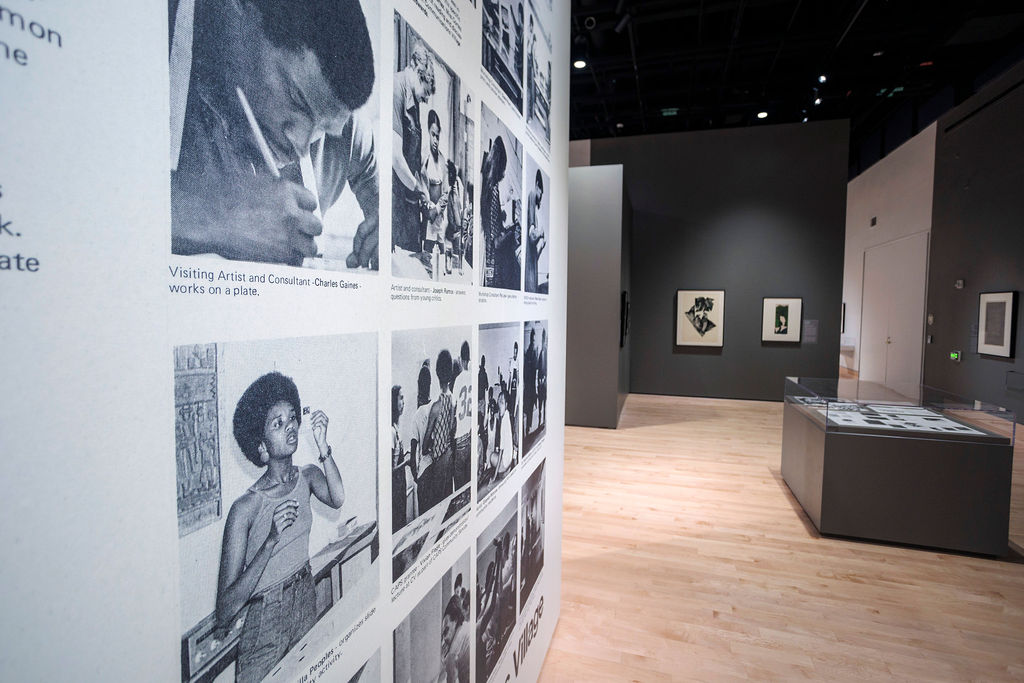
Installation view of “Benjamin Wigfall and Communications Village” (2023-24), Torggler Fine Arts Center, Christopher Newport University, Newport News, Va. | Courtesy the Mary M. Torggler Fine Arts Center, Photography by Echard Wheeler

Installation view of “Benjamin Wigfall and Communications Village” (2023-24), Torggler Fine Arts Center, Christopher Newport University, Newport News, Va. | Courtesy the Mary M. Torggler Fine Arts Center, Photography by Echard Wheeler

BENJAMIN WIGFALL (American, 1930–2017), Untitled, circa 1957-70 (plywood, found wood, paint, 15 13/32 x 12 1/8 x 51/64 inches). | © Estate of Benjamin Wigfall. Virginia Museum of Fine Arts, Arthur and Margaret Glasgow Endowment, 2022.185. Photo by Troy Wilkinson
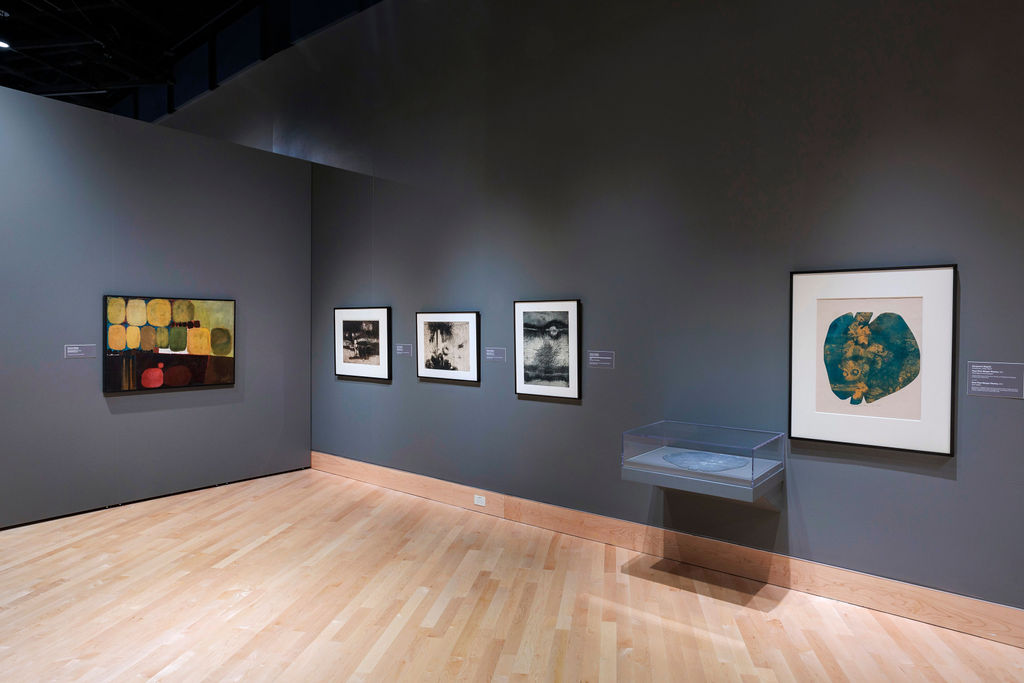
Installation view of “Benjamin Wigfall and Communications Village” (2023-24), Torggler Fine Arts Center, Christopher Newport University, Newport News, Va. Shown, BENJAMIN WIGFALL (2), far left, “Stepping Stones,” 1955 (oil on linen canvas, 33 x 46 inches); far right, “Four Part Shape Theme, 1971 (etching on wove paper, 29 15/16 x 22 1/4 inches). | Courtesy the Mary M. Torggler Fine Arts Center, Photography by Echard Wheeler

BENJAMIN WIGFALL (American, 1930–2017), “Stepping Stones,” 1955 (oil on linen canvas, 33 x 46 inches). | © Estate of Benjamin Wigfall. Courtesy the Estate of Benjamin Wigfall. Photo by Travis Fullerton

